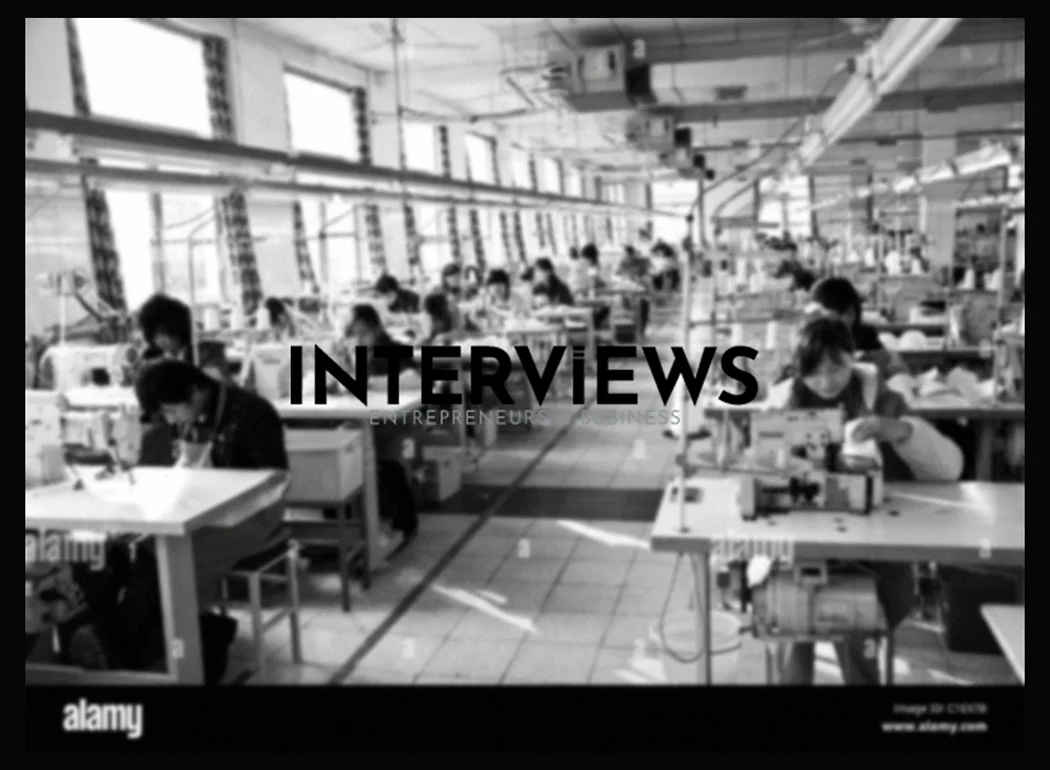Navigating the World of Chinese Clothing Manufacturers: Your Comprehensive Guide
Thinking about entering the garment industry with Chinese manufacturers? A wise choice. China is a major player in the apparel market. However, sifting through many choices can be like searching for one grain of rice in a large container. Don’t worry! This guide is here to help you find clothing manufacturing in China. Let’s begin!
Finding Your Factory Match: Sourcing 101
Finding manufacturers is your first step. The digital age simplifies this process. Here’s how to search for suppliers:
Online Marketplaces: Your Digital Souks
- Alibaba: The leading B2B marketplace. It serves as the Amazon for wholesale, focused on businesses.
Everyone starts here. It has a vast array of suppliers. Their Trade Assurance offers protection. - Global Sources: Similar to Alibaba. It’s often viewed as higher quality. A solid platform to explore options.
- DHgate: A smaller version of Alibaba. Good for smaller orders and direct-to-consumer sales.
- 1688.com: Alibaba’s Chinese sister site for local trade. A good option for adventurous buyers looking for lower prices.
- Made-in-China.com: Another directory, focusing on Chinese suppliers. Check it out for potential matches.
- HKTDC: A curated platform with Hong Kong and mainland suppliers aimed at exports.
These platforms offer many options, but due diligence is critical. As Debutify points out, the internet is vast, and all that glitters isn’t gold. Approach with skepticism and verify everything.
Beyond the Web: Real-World Tactics
- Trade Shows and Fairs: Face-to-face interaction is invaluable. The Canton Fair is a significant event. You can meet manufacturers, see samples, and network.
- Sourcing Agents: Agents like
Kanary act as local experts. They find suppliers, negotiate deals, and manage logistics. - Supplier Directories: Niche directories are useful for industry-specific searches.
- Networking: Use your contacts for recommendations. Word-of-mouth can be invaluable.
Trust, But Verify: Spotting Reliable Suppliers
You found a potential supplier. Great! Now ensure they won’t vanish with your deposit. Use this checklist:
- Business License Verification: This is essential. Request their business license and verify on the official website.
- Ratings and Reviews: Review platforms like Alibaba show supplier ratings. Take these lightly; they can be influenced, but give insight.
- References: Ask for references from former clients. A reliable supplier should provide these easily.
- Factory Audits: For larger orders, consider factory audits. This can be done by yourself or a third-party service.
- Samples: Always request samples before bulk orders to assess quality. Skipping this step is risky.
Verifying suppliers is as crucial as checking a parachute before jumping. Platforms like Alibaba and Global Sources help, but due diligence is still on you.
Small Orders, Big Dreams?
Caution: Chinese factories often require large volumes. Minimum Order Quantities (MOQs) can be a challenge for smaller brands. Finding manufacturers for tiny batches can be tough. Still, don’t lose hope. Some suppliers are more flexible now. Platforms like AliExpress cater to smaller orders. Negotiation is vital to foster flexibility.
Direct from the Source: Buying Straight from Manufacturers
“Direct purchasing” sounds fancy. It means buying directly from manufacturers, avoiding middlemen. It’s generally cheaper, gives more control, and fosters a direct relationship with factories. So, how do you do it?
The Direct Purchase Playbook
- Platform Power: Online B2B platforms enable direct contacts with manufacturers. 1688.com is great for direct sourcing in China.
- Sourcing Agent Advantage: Agents can help you navigate direct buying, precious if you face language barriers.
- Contact and Communicate: Reach out to potential manufacturers! Most have English-speaking sales teams on various platforms.
- Negotiate Like a Pro: Be ready to negotiate prices and terms. Factor in sample costs, shipping, and duties.
Decoding Direct Purchasing
Direct purchasing means buying from the maker. Online marketplaces simplify this but always verify suppliers and negotiate favorable terms.
Importing Your Threads: Crossing Borders
You sourced your manufacturer and placed your order. Now, get ready for importing. Specifically, importing into the USA and Canada. Expect paperwork!
Navigating North American Imports
- Regulatory Compliance: Importing clothing requires adherence to regulations such as labeling and safety standards.
- Customs Duties: Duty rates apply when importing goods. Expense varies by clothing and fabric types.
- Documentation is King: You’ll need to prepare documents like invoices and packing lists for customs clearance.
- Customs Bonds (USA): For shipments over $2,500, customs bonds may be required to ensure you pay duties.
- Wholesale License? Maybe: This depends on imports and local regulations. Always check laws in the US or Canada.
The Import Process: Step by Step
Importing isn’t rocket science; it’s a process. Here’s a simplified rundown:
- Know Your Import Rights: Many countries, including the US and Canada, allow you to import goods.
- Identify Your Goods: Define what you’re importing for duty rates and regulations.
- Find a Supplier (Covered!): You’re ahead here.
- Agree on Terms: Finalize pricing, payments, and shipping arrangements with suppliers.
- supplier.
- Arrange Shipping: Select your shipping method. Choose sea freight (slower, cheaper), air freight (faster, pricier), or express (fastest, most expensive).
- Customs Clearance: You or your customs broker submit documentation and pay duties and taxes.
- Receive Your Goods: Your clothing has arrived. Inspect it to match your order and quality.
Importing requires preparation. Focus on details to make it smooth. Consider hiring a customs broker. They can save you time and reduce issues.
Is it Legit? Validating Suppliers, Continued
We discussed supplier verification earlier. Here are key tactics to ensure you work with a genuine manufacturer.
- Double Down on Licenses: Verify business licenses through official government websites. This protects against scams.
- Reference Roundup: Don’t just request references—
contact them. Talk to past clients for their experience. - Sample Sanity Check: Inspect samples closely. Consider fabric, stitching, and finishing. Poor samples won’t lead to better bulk orders.
- Audit Advantage: Factory audits provide crucial insights. Consider them for long-term relationships.
- Trade Assurance Shield: Alibaba’s Trade Assurance protects payment. It holds funds until you confirm satisfactory receipt of goods. It offers some security, as Cad Crowd explains.
- Communication Cadence: A good supplier must be responsive. Watch out for slow responses or reluctance to share information.
The Price is Right (or is it?): Manufacturing and Importing Costs
Let’s discuss money. Manufacturing in China is often cheaper. Understanding all costs is essential. Here’s a breakdown:
Cost Components
- Labor Costs: Labor costs in China are lower than in many Western countries. In 2018, they were about $5.51 per hour. However, they are rising, especially in coastal areas.
- Shipping Shenanigans: Shipping costs depend on method and speed.
- Sea Freight: Cheapest for large volumes, but very slow (weeks to months). A 40ft container to the USA roughly starts at $2900.
- Air Freight: Faster (days to weeks), more expensive. Costs range from $3.40 to $15.50 per kilogram.
- Express Shipping: Fastest (days), most expensive. Costs around $7.54 to $9.54 per kilogram.
- Import Duties & Taxes: These are unavoidable. Duty rates vary by product classification and origin.
- Customs Broker Fees: Include customs broker fees if you use one.
- Other potential costs: Costs for factory audits, samples, inspections, exchange fees, and tariffs can add up.
Do not only focus on per-unit costs. Work out the
Payment Protocols: How to Pay Your Supplier
How can you pay your Chinese manufacturer? Here are common methods:
- International Wire Transfers (T/T): Reliable and widely accepted but has transaction fees. Involves upfront deposits and balance after shipment.
- Letters of Credit (LC): Very secure but complex and costly. Often for large transactions. It is the safest way, as Cogoport explains.
- Alibaba Trade Assurance: Acts as an escrow, adding security for first orders.
- PayPal: Increasingly used, especially for small transactions. Convenient but can incur higher fees.
- Western Union/Money Transfer Services: Quicker but often costly and less secure for large business deals.
- Sourcing Agent Payments: Simplifies payments. Agents often pay suppliers for you.
- Credit/Debit Cards: Possible, but rare for large B2B transactions. May involve higher fees.
Select a payment method that balances security and cost. For new relationships, Trade Assurance or Escrow services are advisable for added protection.
Risk Management 101: Avoiding Pitfalls
Manufacturing in China comes with various risks. Being aware of these and having plans can help you mitigate them.
Common Risks and Remedies
- Payment Fraud: Losing funds to fraudsters. Mitigation: Verify suppliers closely, use secure payment methods, and avoid full upfront payments to unknown suppliers.
- Poor Product Quality: Receiving low-quality goods. Mitigation: Conduct thorough quality control with samples, audits, clear specifications, and inspections.
- Intellectual Property (IP) Issues: Risk of designs being copied. Mitigation: Register trademarks, use NDAs, and choose suppliers with good IP reputations.
Effective risk management is about preparation, not paranoia. As NextSmartShip notes, knowledge is power. Understanding risks helps you take preventive action.
Factory Hotspots: Key Manufacturing Regions
China’s manufacturing is not uniform across the country. Certain regions are key for specific industries. For clothing, focus on:
- Guangdong Province (Guangzhou, Shenzhen): The leading region for garment manufacturing. Guangzhou has massive wholesale markets, while Shenzhen is known for fast fashion.
- Zhejiang Province (Hangzhou): Focused on textiles and fashion. Hangzhou is an important center with multiple brands located there.
- Shandong, Jiangsu, Fujian: Other provinces with significant clothing manufacturing.
Narrowing your supplier search in these regions increases the likelihood of finding skilled manufacturers.
Why China Stays Competitive: The Cost Advantage
Why does China remain the preferred location for manufacturing? Several factors contribute:
- Lower Labor Costs: Although rising, they are still lower than in developed countries.
- Established Supply Chains: Efficient supply chains have developed over decades. Raw materials and finished garments are easier to source.
- Economies of Scale: China’s large manufacturing capacity lowers per-unit costs.
- Government Support: Long-term policies favor manufacturing growth.
- Infrastructure and Logistics: Ports and transportation networks support efficient production and shipping.
- Raw Material Access: Available raw materials reduce costs further.
These elements create a strong cost advantage, positioning China as an attractive manufacturing hub.
China’s Export Empire: Garment Domination
China’s exports are diverse. Clothing and accessories represent a significant portion. In 2024, exports for fashion, clothing, shoes, and bags reached about US$116 billion. China leads as the top apparel supplier to the US, although its market share varies due to competition from Vietnam and Bangladesh.
Wage Watch: Minimum Wage in China
Understanding labor costs is essential. China’s minimum wage varies regionally. Shanghai has the highest monthly minimum wage at about $370, while Beijing has the highest hourly wage at about $3.7. These differences reflect regional economic conditions.
Brand Building 101: Launching Your Clothing Line
If you want to create a clothing brand, here’s how to start:
- Develop Your Vision and Brand Identity: Define niche, audience, values, create name, logo, tagline. What makes you distinct?
- Create a Business Plan: Include market research, financial goals, structure, marketing strategy. Planning helps avoid confusion later.
- Design and Develop Your Clothing Line: Work on unique designs, quality materials, production plan (outsource or in-house). Bring your vision to life.
- Build Your Online Presence: Establish an e-commerce website, engage on social media, explore marketplaces like Etsy or Shopify for visibility.
- Market Your Clothing Brand: Use targeted ads, collaborate with influencers, create retail partnerships. Promote your brand!
- Consider Retail Presence (Optional): A physical store or pop-up can enhance the brand experience.
- Learn and Adapt: Track performance and adapt strategies accordingly. The market changes—so must you.
Starting a clothing brand is a journey. Be ready to learn and grow as you progress.
Market Muscle: China’s Retail Giants
The retail landscape in China is vibrant and led by giants such as JD.com and Alibaba Group. These platforms act as ecosystems than merely e-commerce sites. For clothing brands, Li-Ning often stands out as the leading Chinese brand.
Brand offers athletic wear that blends function with style.
Fashion Forward: Popular Styles in China
Western fashion trends influence China. Yet, traditional clothing remains vital. The Cheongsam is a classic dress. It is an iconic symbol of women’s fashion in China.
IEC Essentials: Import-Export Code
Direct importers must acquire an Import-Export Code (IEC). This is part of the licensing process for imports. Agencies like OyeExpress help in this area. It is crucial for legal trade.
Walmart in China? Yes, Indeed.
Walmart operates extensively in China with over 300 stores. Sam’s Clubs are also present nationwide. Global retail is indeed universal.
The Big Leagues: China’s Clothing Titans
Heilan Home (HLA) is the largest listed apparel company in China. It has the highest market value. This shows growth in the domestic fashion market.
In Conclusion (Just Kidding, There’s No Conclusion, Only Next Steps)
Navigating Chinese clothing manufacturers is complex. This guide prepares you to start sourcing. Use due diligence and clear communication. Savvy negotiation is key too. Seek out factories, build your brand, and aim for fame in fashion. Good luck, and keep this guide handy.




